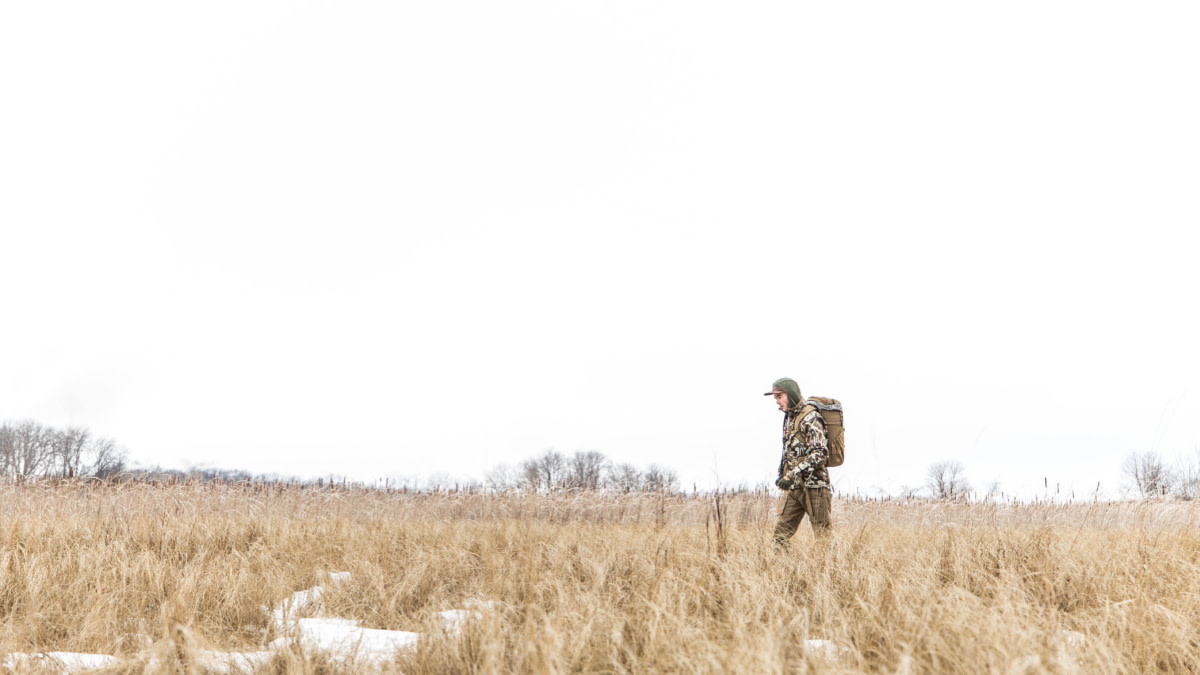
Many articles have been written on how to scout whitetails in the spring and winter, and for good reason. Post-season scouting is one of the best tactics we have as whitetail hunters to learn more about the deer we're hunting. For the most part the strategy remains consistent: locate somewhat fresh sign from the recently closed hunting season. But for those of us seeking to fill tags on ground open to all, the strategy can be adapted accordingly.
Scout for Access Points We all have that pin on our map that’s sat dormant for years. Having never set foot on the parcel, we're often reluctant to spend cherished time during hunting season to check out that spot. Maybe it's several hours away or tricky to access. Whatever the issue, the offseason is the perfect time to make the commitment.
One of my favorite strategies is to locate areas that are difficult to access. Difficult access usually means decreased hunting pressure on public land. Complicated access can include steep terrain, long treks, cliffs, water barriers, thick vegetation, private land detours, discrete public land easements, rough dirt roads, and more.
Without seeing these places in person we don’t know the logistics of the access and we don’t know if we’ll need a bike, ATV, or waders to get the job done. We also don't know where the best point of access is nor what kind of terrain and vegetation we might encounter. At the end of the day these factors often win the argument and we’re left shelving this spot until next hunting season. If we don’t visit these places during the offseason, the cycle continues and the spot is canned for another year. It's crucial to get boots on the ground experience at these unexplored pins during the off-season.
Locate Signs of Hunting Pressure Public land whitetails are highly educated critters. If your goal is to outsmart a mature buck on public dirt, odds are you need to locate the sanctuaries in which bucks can survive multiple hunting seasons. This is why it’s not only important to scout the deer, but also scout the other hunters.
At the close of season check out the parking areas to look for signs of where hunters are most commonly accessing the parcel. There will likely be fairly obvious trails and routes leading to and from these access points. Depending on the tree stand regulations in your chosen state, taking inventory of tree stands, ground blinds, leftover tree pegs, and hand cut tree limbs will also give you a good idea as to which places should be avoided. With a little investigating you’ll likely conclude that some public spots are overrun with hunters and should be avoided altogether. With a little luck and hard work, you might just find a few spots completely off the radar of other hunters. Mature bucks take note of human intrusion, it’s wise for you to do the same.
Locate Bedding Areas and Travel Corridors When hunting public land, odds are that destination-type food sources are few and far in between. By nature of its inception, public land tends to be more rugged and not as conducive for agriculture as the surrounding private lands. Therefore on public ground, more often than not, we're hunting bedding areas and browse patterns.
During your off-season scouting a good strategy is to find the most conducive bedding areas on the property. On public land this tends to be areas that are overlooked, rugged, or overgrown sanctuaries. These bedding areas also commonly have a visual or olfactory advantage so the deer can keep tabs on any incoming hunters. A quick look at onX satellite imagery will reveal obvious public access points, areas of dense vegetation, and a study of the terrain will key you in on places that other hunters won’t want to go.
During your winter walk-through, fresh beds might not be present as deer are likely to have found private land sanctuary with abundant feed. However, November beds should still be slightly visible in the absence of fresh powder. A cluster of this year’s rubs can also key you in on the proximity of a productive bedding area. After locating likely bedding, connect the dots with trails, hard edges, and terrain funnels to piece together next year’s plan of attack.
By now we all know the benefits to putting in some off-season work and scouting new areas. However, following the blueprint seen on outdoor television could very likely lead to pessimism and another deer tag left in your pocket at the close of season. By understanding the nuances of hunting public land and incorporating these differences in your off-season scouting strategy, you’ll be one step ahead of next deer season.
Feature image via Captured Creative.




